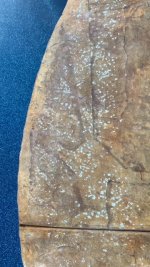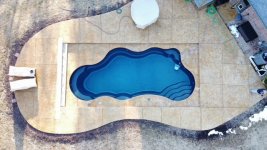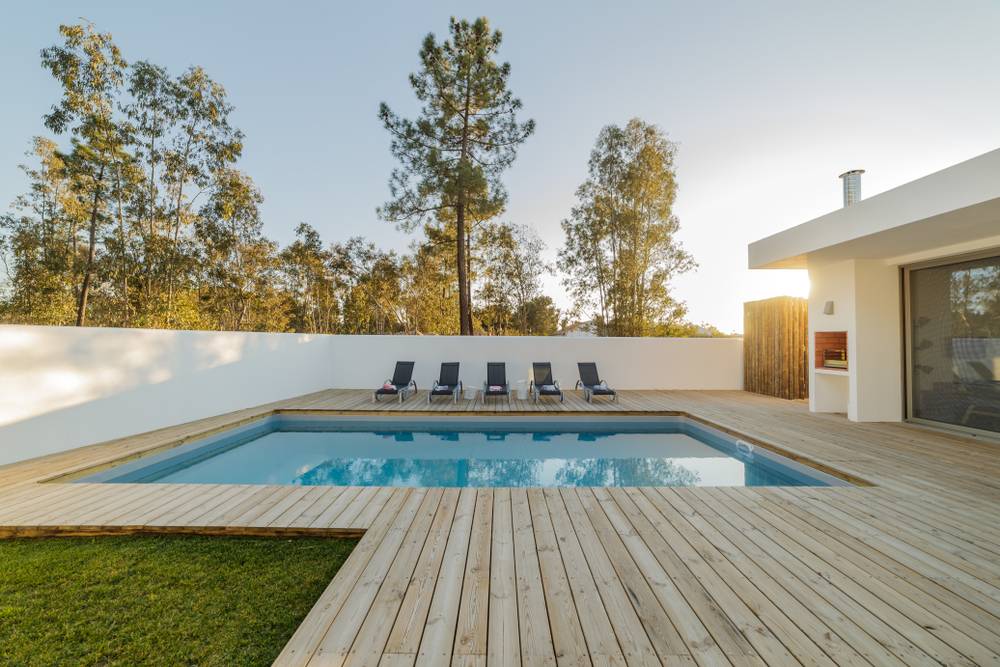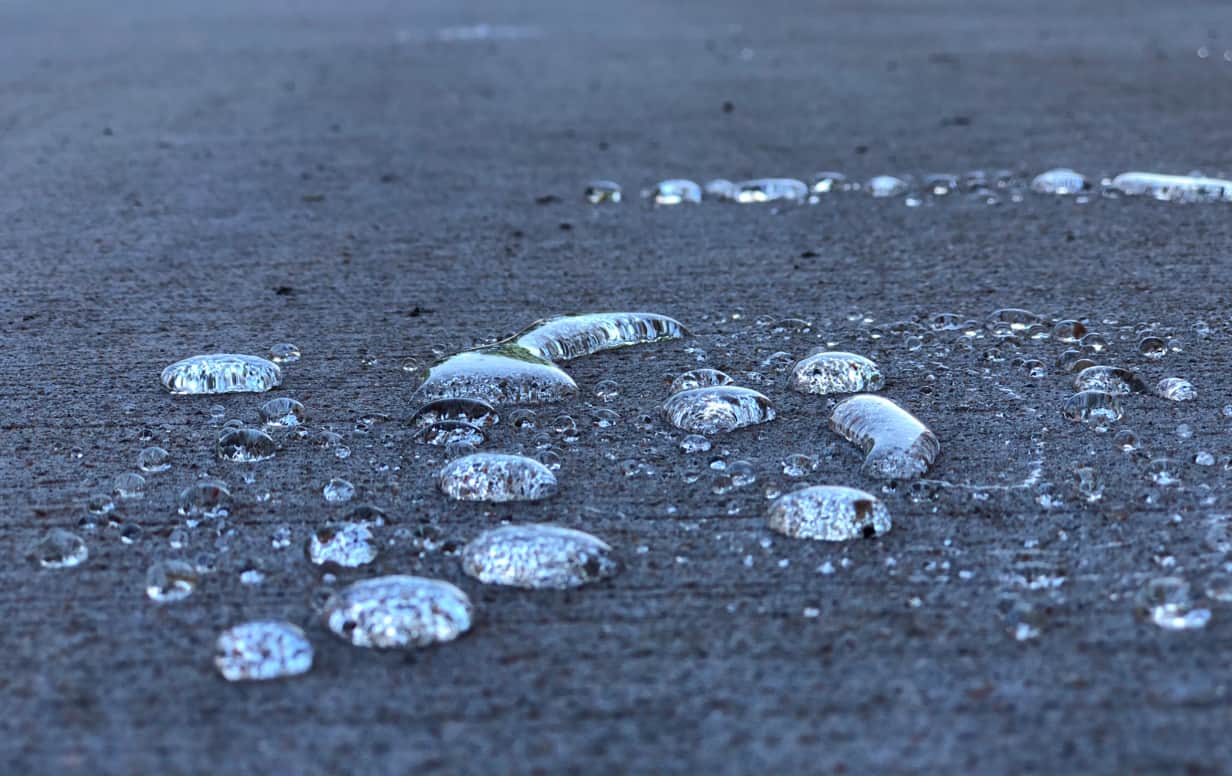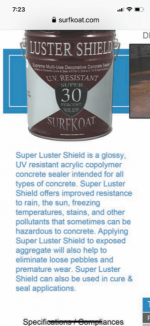Our fiberglass pool (14,000 gallon Latham Cancun) was installed summer 2021 with a Pentair Intellichlor SWG and VS Pentair pump. We have loved it. It is so easy to maintain correct levels, only adding muriatic acid to keep the pH level down weekly. We leave the pump running 24/7 and did not close the pool up for the winter.
We also have an auto cover and over the December and January of this year we had it closed. We opened it a week ago and saw three separate areas of the stamped/stained concrete pitting. The PB said it was caused from the saltwater sitting on it under the cover. We had heavy snow/ice which was added pressure on the cover touching the concrete. The concrete was done in July and was sealed. Now he says we will have to switch to chlorine to avoid any continued damage to the concrete and will install an inline chlorine dispenser. This is disheartening since I have concerns with how easy this will be to maintain compared to the SWG and rising levels of CYA using pucks. I was looking at ozone generators to help with using less chlorine. Any insight as to the issue with the concrete (which they are going to fix but I am not certain how) and with opinions/insight/tips on a maintaining chlorine pool with an inline chlorine dispenser?
Thanks!
We also have an auto cover and over the December and January of this year we had it closed. We opened it a week ago and saw three separate areas of the stamped/stained concrete pitting. The PB said it was caused from the saltwater sitting on it under the cover. We had heavy snow/ice which was added pressure on the cover touching the concrete. The concrete was done in July and was sealed. Now he says we will have to switch to chlorine to avoid any continued damage to the concrete and will install an inline chlorine dispenser. This is disheartening since I have concerns with how easy this will be to maintain compared to the SWG and rising levels of CYA using pucks. I was looking at ozone generators to help with using less chlorine. Any insight as to the issue with the concrete (which they are going to fix but I am not certain how) and with opinions/insight/tips on a maintaining chlorine pool with an inline chlorine dispenser?
Thanks!


